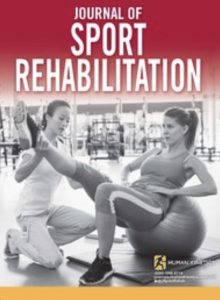Publications

Comparison of the Immediate Effect of Petrissage Massage and Manual Lymph Drainage Following Exercise on Biomechanical and Viscoelastic Properties of the Rectus Femoris Muscle in Women
Authors: Nilüfer Kablan 1, Nuray Alaca 2, Yaşar Tatar 3
Affiliations:
- Department of Physiotherapy and Rehabilitation, Faculty of Health Sciences, University of Health Sciences, Istanbul, Turkey
- Department of Physiotherapy and Rehabilitation, Faculty of Health Sciences, Acibadem Mehmet Ali Aydinlar University, Istanbul, Turkey
- Faculty of Sports Sciences, Marmara University, Istanbul, Turkey
Journal: Journal of Sport Rehabilitation - February 2021, Volume 30, Issue 3, Pages 1 – 6 (DOI: 10.1123/jsr.2020-0276)
-
Field & Applications:
- Sport
- Treatment evaluation
- Warm-up / Recovery
- Injury prevention
Context: Fast and adequate recovery after exercise and activity is important for increasing performance and preventing injuries. Inadequate recovery usually causes changes in the biomechanical and viscoelastic properties of the muscle.
Objective: To compare the immediate effect of petrissage massage (PM) and manual lymph drainage (MLD) following submaximal exercise on the biomechanical and viscoelastic properties of the rectus femoris muscle in healthy women.
Design: Cross-sectional, repeated-measures.
Setting: Marmara University. Participants: 18 healthy female students. Intervention(s): Following the submaximal quadriceps strengthening exercise performed in 3 sets of 8 repetitions with intensity of 75% of 1 maximum repetition, participants’ right leg received a 5-minute PM (PM group) and the contralateral leg received a 5-minute MLD application (MLD group).
Main Outcome Measures: Skin temperature was measured using P45 thermographic thermal camera (Flir System; ThermaCAM, Danderyd, Sweden), and muscle tone, biomechanical, and viscoelastic features were measured with a myometer (Myoton AS, Tallinn, Estonia) at baseline, immediately postexercise, post-PM/MLD application, and 10 minutes postexercise.
Results: In the PM group, the tonus (P = .002) and stiffness (P < .001) values measured after the massage and at the end of the 10-minute resting period were found to be statistically different than those measured right after the exercise (P < .05). Relaxation time and creep values at all measurement times were significantly different (P < .05). In the MLD group, it was observed the tonus (P < .001), stiffness (P = .025), and relaxation time (P < .01) values decreased significantly after the MLD compared with the values measured after the exercise; however, the creep value was found to be significantly different in all measurements (P < .05).
Conclusion: PM and MLD reduce passive tissue stiffness and improve the extent of muscle extensibility over time against the muscle tensile strength. PM and MLD are therapeutic methods that can be used to support tissue recovery after exercise and prevent injuries.
The PM and MLD decrease passive tissue stiffness after exercise and increase the extensibility of the muscle against tensile strength over time. Although the effect of PM was higher and much more lasting on biomechanical and viscoelastic properties compared with MLD, both are therapeutic methods that can be used to support tissue recovery after exercise and prevent injuries.


